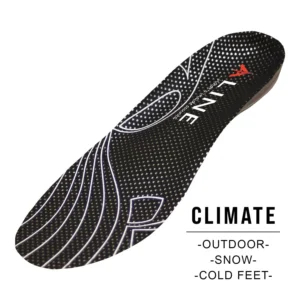
Why Hiking Insoles Matter for Every Trek
Hiking insoles are essential for comfort and foot health during treks. They reduce pressure on your feet, providing support to areas prone to pain, such as arches and heels. A good insole enhances your natural stride, preventing strain and injuries. The cushioning absorbs shock, particularly on uneven terrains, giving you confidence in every step. Whether you’re a seasoned hiker or a beginner, hiking insoles make every adventure more enjoyable and pain-free.

Understanding the Key Features of Hiking Insoles
Hiking insoles are designed for functionality. Look for shock absorption, moisture-wicking properties, and a durable build. Arch support and heel cups prevent overpronation and improve alignment. Different materials cater to various needs; gel insoles cushion impact, while foam adds softness. Knowing these features helps you pick the best fit.
Benefits of Hiking Insoles for Long Treks
Hiking insoles reduce fatigue by evenly distributing your weight. They minimize the risk of blisters and calluses by reducing friction. Insoles with antimicrobial properties help maintain hygiene, especially on multi-day treks. Over time, they improve posture and reduce stress on knees and hips, proving their long-term value.
Choosing the Right Hiking Insoles for Your Feet
Select insoles based on your arch type—flat, normal, or high. Ensure they fit snugly into your hiking boots without causing tightness. Many brands offer size-specific options or trimmable designs for customization. Always consider your hiking style; long-distance hikers might need firmer insoles, while casual hikers benefit from softer options.
Are Custom Insoles Worth the Investment?
Custom insoles cater specifically to your foot shape and gait. While more expensive, they provide unparalleled support and comfort. Podiatrists recommend them for individuals with unique foot conditions or chronic pain. However, for general hikers, high-quality over-the-counter options often suffice.
The Science Behind Arch Support in Insoles
Arch support distributes pressure evenly across your foot, preventing pain and fatigue. Proper arch support aligns your body, reducing strain on your legs and back. It also stabilizes your foot on uneven terrains, a critical feature for challenging hikes. Without it, you risk overpronation and related injuries.
Tips for Maintaining Hiking Insoles
Clean your insoles regularly to prevent odor and wear. Hand wash with mild soap and air dry to maintain their shape. Replace insoles once they lose cushioning or show visible damage. Proper care extends their lifespan, ensuring consistent performance across multiple treks.
Hiking Insoles vs. Everyday Insoles
Hiking insoles are sturdier and designed for rugged terrains. They offer enhanced arch and heel support, catering to the unique demands of trekking. Everyday insoles prioritize basic comfort for regular activities. Investing in hiking-specific insoles ensures you’re prepared for outdoor challenges.
Insoles for Different Hiking Conditions
Trail conditions influence insole choice. For rocky terrains, opt for thick, shock-absorbing insoles. Wet environments call for moisture-resistant options with a firm grip. Cold-weather hikers benefit from thermal insoles that retain heat. Matching insoles to the terrain maximizes comfort and safety.
Do Hiking Insoles Help Prevent Injuries?
Hiking insoles stabilize your foot, reducing the risk of twists and sprains. They cushion impact on joints, preventing repetitive stress injuries. Proper alignment from insoles reduces strain on your knees, hips, and lower back. This proactive measure protects against common hiking-related injuries.
Hiking Insoles for Plantar Fasciitis Relief
Plantar fasciitis sufferers benefit significantly from hiking insoles. Supportive insoles reduce tension on the plantar fascia, alleviating pain. Heel cups and cushioning absorb shock, easing pressure on inflamed areas. Hiking becomes manageable and enjoyable with the right support.
Are Gel or Foam Insoles Better for Hiking?
Gel insoles excel at shock absorption, making them ideal for rocky terrains. Foam insoles provide soft cushioning, perfect for lighter hikes. A combination of both offers balanced support and comfort. Your choice depends on your hiking intensity and personal comfort preferences.

Can Hiking Insoles Be Used in Regular Shoes?
Yes, hiking insoles can be used in regular shoes. They offer enhanced support and cushioning, making everyday activities more comfortable. However, their design may feel bulky in slim-fitting footwear.
How Often Should You Replace Hiking Insoles?
Replace hiking insoles every six months or sooner if they show wear. Signs include flattened cushioning, odor, or decreased support. Regular replacement ensures optimal performance and foot health.
Are Insoles Necessary for Expensive Hiking Boots?
Even premium hiking boots benefit from hiking insoles . Boots may lack personalized arch or heel support. Adding insoles customizes fit, improves comfort, and prevents long-term foot strain, enhancing the boot’s performance.